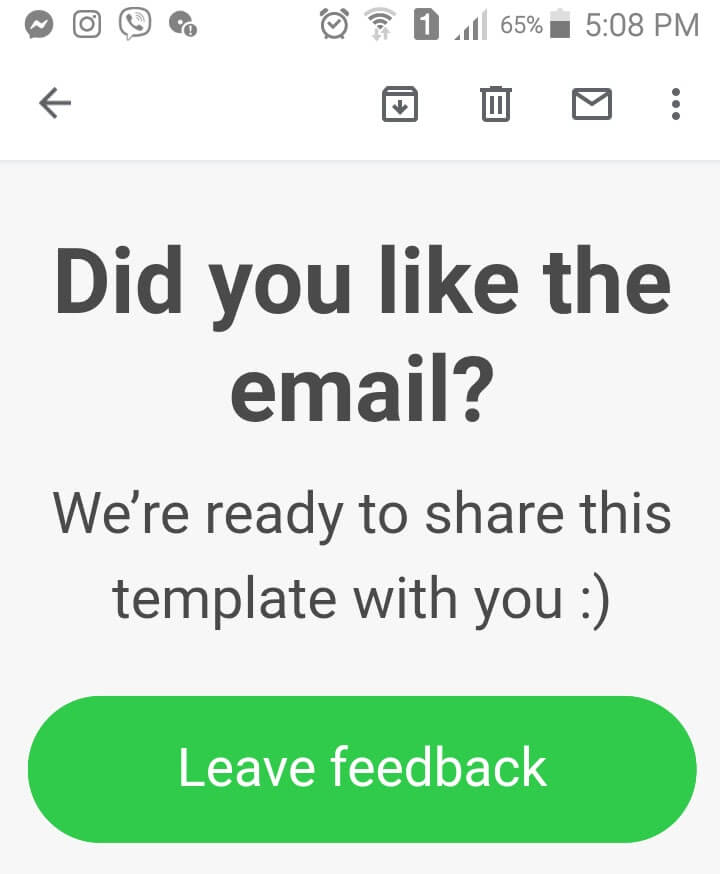Enhancing Email Marketing: Essential Metrics and Improvement Tactics
Vlada Malysheva, Creative Writer @ OWOX
Hanna Kuznietsova, Head of Content в Stripo
There’s so much you can do to optimize your email marketing. The question is: How do you know where to start?
Measuring the effectiveness of your email campaigns will give you the answer and tell you if you are moving in the right direction.
So what are these metrics, how to measure and improve them?
Types of email marketing metrics
Let us conditionally divide them into two groups:
- Strategic metrics — they can’t be measured within one email campaign.
- Tactical metrics — the ones you can measure within one email campaign.
1. Strategic metrics
You use them to measure the success of your email marketing as a channel within a definite period, it could be a month or even a year. We can also call them the long-term ones.
Customer acquisition cost
CAC shows how much it cost you to get a new customer. Neil Patel says that this metric predicts your company’s profitability and consequently — its future. CAC is determined by the difference between how much money your customers are going to spend and the costs of winning them.
Here you will have to consider all the channels that you use for winning customers.
To improve your CAC, you should: Work on your website’s conversion, first of all. Generally, it does not matter what channel you use to get more customers, because, in the end, you lead them all to your website for committing purchases. Then, you need to make sure your all ads (Google or Facebook ads) have a clear CTA.
Tools to use: Google Analytics (start with using OWOX to get all cost data from non-Google services like Facebook, Instagram, or LinkedIn in GA).
Lifetime value
Roughly speaking, this metric shows how much it costs us to keep a certain customer buying from our brand.
To calculate LTV, you should divide the revenue this customer brings/has brought by the costs it takes to maintain these relations.
Normally, we keep in touch with our customers through emails, including retention campaigns.
To improve your LTV, you should: Track your customers’ behavior both online and offline to always provide the value propositions they might be interested in. Enable subscribers to update their preferences directly in emails. Run customer retention email campaigns.
Tools to use: Google Analytics.
ROI
Return on investment shows the efficiency of your email marketing as a channel and shows the return from an investment.
However, it is hard to calculate your ROI accurately, as quite often it is in the middle of a sales funnel. Besides, every purchase made after a promo email campaign requires a series of transactional emails to maintain this purchase and keep customers updated on their orders. In such cases, it is fair to use a U-shaped, linear, or OWOX Funnel based attribution model for accurate evaluation.
You cannot measure ROI for one single campaign. You divide all the gain received within a certain period of time (normally a fiscal quarter or even a year) by the costs within the same timeframe.
Of course, those industries where email marketing is a supportive channel may not need to track its ROI. But if you are an eCommerce business, you’d better do it and compare email marketing ROI to the results of every other channel you use.
To improve your ROI, you should: All the activities that one should implement to increase LTV, CAC, and all the tactical metrics, which we will discuss later, affect your overall ROI.
Tools to use: Google Analytics and OWOX will show your total gain.
2. Tactical metrics
These are the metrics you should track and analyze for every new email campaign that you run, no matter if this is a promo campaign or a transactional email, like a welcome series.
We can also call them the short-term ones.
Open rate
This metric never shows the effectiveness of your campaigns. Then why care about it? It is as simple as that — the more recipients open your emails, the more people will see your value offer, consequently, the higher the chances someone will make a purchase.
Normally, the open rate ranges from 15% to 30% for various industries. Average OR is 17.8%.
To improve your OR, you should: Work on your subject line as 47% of email recipients decide whether to open a given email judging by the subject line. Find out what is the best “Send time” for your audience and reach them out at this certain time. Pay close attention to your sender name — use your real name/your company’s name, use your business email.
64% of recipients judge by the sender name whether to open an email.

According to Campaign Monitor, addressing by name in the subject line also increases your OR by 26%.
Any ESP/CRM will help you personalize your subject lines.
Tools to use: Your ESP. It will tell you the best send time, the best days for reaching out to your contact base, and, of course, will show your OR.
Click-through-rate/Click-to-open-rate (CTR/CTOR)
CTR and CTOR are very similar. With only one difference — the former one shows the ratio of clicks to the total number of delivered emails, while the latter shows the ratio of clicks to the total number of opened emails.
What does it really show? — User engagement. It shows if your subscribers like the content you are sharing with them and if they like your value propositions.
To improve your CTR/CTOR, you should: Work on your email design. Yes, we are talking about email structure, fonts that you use across emails. Pay close attention to your CTA buttons’ design — they should be noticeable. Add visual elements, like images, and GIFs, videos — videos in emails increase CTR by 65%. For instance, if your current rate is 4%, it may grow up to 6.6%. You also need to make your emails mobile-friendly as over 50% of all emails worldwide are now opened on mobile devices. Modern email template editors, like Stripo.email, let you design beautiful fully responsive emails.

Make sure your emails are accessible. It means that we should optimize our emails to the screen readers. Recipients may use screen readers for their own reasons — visual impairment (the WHO says that over 285 million people have trouble seeing even when wearing glasses), or because they are just too busy to read our emails.
Tools to use: Your ESP/CRM.
Reports are normally provided in numbers, percentages. Some ESPs like eSputnik even compare your results to the average rates in your industry.

Conversion rate
The conversion rate is a super important metric to measure as it directly affects your ROI.
You divide the number of recipients by the number of those who completed the desired action.
eCommerce, for instance, could consider “purchases” as their conversion.
CR depends on your email design, on your value offer, on your CTA text, and on your website navigation.
To improve your CR, you should: Personalize your promo emails. We’re not talking about addressing by name. We’re talking about personalized value offers, personalized content. Campaign Monitor states that personalized campaigns drive 18X more revenue than non-personalized ones.
If your campaign’s goal is not selling, but collecting feedback, explain to your recipients why you need it.
Reduce the number of actions your clients need to make the desired action as it increases the chances they will do it. The fewer actions the higher the chances. The AMP4Email technology is of great help here.
Stripo.email ran an A/B test — half of their users received a regular Google form, they had to leave the email to fill this form out; and the other half received the AMP form, which allowed them to submit their feedback directly in emails. The AMP form showed 5.1X times better results.

To build your dynamic emails, you can either use Stripo’s AMP email templates or build yours with the Drag-n-Drop blocks.
Tools to use: Google Analytics, OWOX.
Net promoter score
Net Promoter Score is the world-famous metric for measuring customer loyalty and satisfaction.
When running this campaign, you ask your users just one simple question, “How likely are they to recommend your brand to their friends?”.
Rates from 0 to 6 are actually bad — means customers are unsatisfied; rates from 7 to 8 are neutral — these people will not promote you. It means you could do better; rates from 9 to 10 are just great. Those who rate you this high are called promoters.
To improve your NPS, you should: Run such campaigns constantly. Send a survey email to your user after a purchase, or a webinar that you recently hosted, etc. Then depending on the user’s answer you either thank him or ask what you can do to improve their opinion about your product/service/brand.
Tools to use: Any ESP (you run an email campaign and your ESP will track the results) and Intercom.
Spam complaint/Unsubscribe rate
The latter shows how many people actually are no longer interested in your emails which is OK. It does not affect your email deliverability, nor your sender reputation.
The former one is very important, it should never exceed 1%.
Some say 2%, but we still think that keeping your Spam Complaint rate below 1% is safer for your brand.
Why do people mark you as Spam? For many reasons:
- the subject line of your emails does not reflect the content of your emails;
- you send unsolicited emails;
- your emails do not have the “Unsubscribe link” — hence, they mark you as Spam just to stop receiving your emails;
- your emails do not mention the reason why you are reaching out to your contact base.
If your emails match at least any of the last three points your emails are illegal in the US, Canada, and in the EU, according to GDPR and CanSPAM laws.
Not only your customers can mark your emails as spam, but also some email clients may deliver your emails to the respective Folder in users’ inboxes due to their policy and rules. They are:
- quite often emails with too many images that have no alt texts are considered spam;
- image to text ratio (40/60) — you add two paragraphs of text for each image in your email. Or there should be at least 500 text characters in your email to successfully pass spam filters.;
- bad sender reputation.
To improve your Spam complaint/Unsubscribe rate, you should:
Eliminate all the reasons given above why customers might mark you Spam, along with the reasons why email clients may consider your emails Spam.
However, you should not worry about your unsubscribe rate if it is within the industry norms. It is ok to let subscribers go.
Wrapping up
Measuring email marketing metrics is not so difficult as it seems.
You just need to decide on what the main goal/goals of your current campaign are. Then you need to build an email template that meets this goal. And finally, choose a proper analysis tool. Or use OWOX BI — it allows integrating different systems to get more accurate results of your email marketing results.
If you still have questions, ask in the comments below:)
And if you want to learn more about marketing analytics, subscribe to our newsletter with useful tips for marketers and analysts.
FAQ
-
How can you improve your email conversion rate?
- To improve your email conversion rate, you can personalize your emails, segment your audience, write compelling subject lines, include clear calls-to-action, and optimize your email design. -
What is a good email click-through rate (CTR)?
- A good email click-through rate (CTR) is typically around 2-3% for most industries. However, industries such as nonprofit and healthcare may have higher CTRs. -
What are the top email marketing metrics worth measuring?
- The top email marketing metrics worth measuring are open rate, click-through rate (CTR), conversion rate, bounce rate, and unsubscribe rate.









